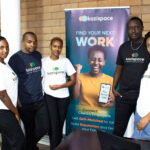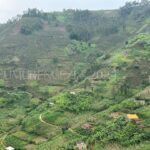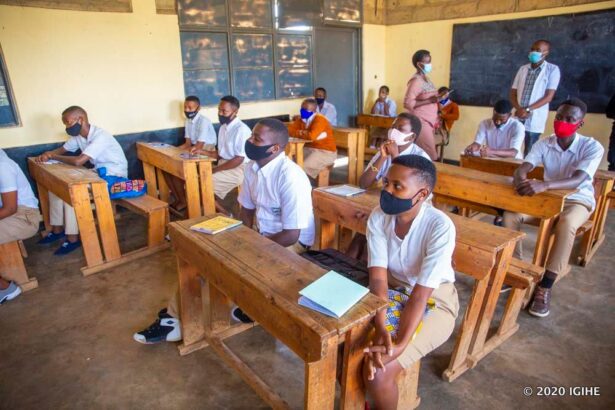The education sector is one of the areas undergoing many changes that the beneficiaries are applauding. Parents are happy about the equalization of school fees in public and charter schools, teachers are also smiling over the increase in salary.
In bid to continue supporting the education sector, the Rwandan government is going to invest a lot of money in activities related to it, where this sector is the second that was given a lot of money in the 2022/23 fiscal year.
The Department of Internal Security has the largest budget of Rwf1,717.8 billion followed by the Department of Education with 573.3 billion; Justice, reconciliation, and rule of law with Rwf413.8 billion while the health sector received Rwf365.2 billion.
Of course, this money will be invested in education activities in Rwanda in order to strengthen its quality and develop it.
- Advertisement -
Although it is expected that more than Rwf249 billion will go to the salaries of those who work in the education sector, there are important projects of priority to promote quality education as highlighted below.
Improving the quality of education by providing modern equipment
The State Minister in Charge of Primary and Secondary Education, Gaspard Twagirayezu has told IGIHE that increasing the quality of education through the capacity building of teachers, schools, and students are among projects of the Ministry of Education (MINEDUC).
Under this project that will cost more than Rwf6.4 billion, it is planned that tablets will be given to at least 4000 teachers, containing courses prepared in the form that have been researched and proven to be productive.
These are computers that will be provided to public elementary and middle schools that are supported by the government under the 150 contract to increase capacity.
Twagirayezu said that this technology is aimed at improving the quality of education, where the teacher will be able to give lessons based on the manual that is included in the computer, which has all the complete information so that it will increase the level of the child’s knowledge.
“It will also help the teacher to monitor the learning of children and their behavior while they are in class, to be able to identify those who are absent from school, the level of their success. It will also help to monitor the performance of the teacher and his supervisor,” he noted.
It is expected that these materials should be delivered to the schools and begin to be used at the beginning of the first term of the school year 2022/23 which will start on September 26, 2022.
Writing books within the country
As part of the effort to be self-sufficient, Rwanda has started authoring books in a program known as ’in House texting’ and it is producing results.
The Ministry of Education anticipates that at least Rwf10 billion will be spent every year in order to achieve the desired goals in 2026.
In this fiscal year, the government allocated Rwf5.9 billion for the writing of educational textbooks.
The books that will be provided are related to the subjects of Mathematics, Rwandan, English, French, Intelligence, Social Sciences, Biology, Technology, History, Environmental Science, Business, Swahili, Religion, Education, Music, Arts and Crafts, home science, agriculture and animal husbandry.
The focus is also on the pre-school, primary, and high school levels.
Twagirayezu pointed out that writing books in Rwanda have produced tangible results because more than 14 million books have been produced and it has reduced the gaps and mistakes that used to appear in books written by foreigners.
“After 14,187,817 books were produced, the number of children using one book decreased from nine in 2017 to five as per statistics for the year 2020/21,” he said.
He went on to reveal that the waiting time for the books to reach the schools was reduced since they were imported.
Promoting basic education
MINEDUC has a project that aims to improve basic education in which it will inject nearly Rwf10 billion.
This project will focus on the preparation, use, and implementation of student assessment reports, and campaigning for gender equality in schools.
There is also the establishment of standards for evaluation in primary schools and the first stage of secondary schools, the provision of books and manuals for kindergartens, and the training of teachers in kindergartens.
It is also planned that books for kindergartens and those in the first grade will be digitized, providing materials for learning and teaching mathematics, science, and technology, materials for science teaching in schools such as laboratories, and materials for preschool technology and modeling.
There are also the provision of materials and books in kindergartens, the introduction of technology in English learning materials, the training of teachers in relation to teaching, the use of tests for the placement of school principals, and the preparation and delivery pieces of trainings for teachers of science and mathematics.
At present, the development of primary education has reached an impressive rate, where 98.9% of school-age children are currently in school (primary school).
Among them, the pass rate in primary schools increased from 81.6% in 2019 to 82.8% in 2020/21. Those who go to secondary school went from 53% in 2019 to 56.9% in 2020.
The pass rate in secondary schools increased from 90.6% in 2019 to 92.2% in 2020, all of which is a boost to the development of basic education.
Increase the number of skilled and competent workers
Sometimes, increasing the number of skilled and capable staff may seem counterintuitive because there has been competition, but it is necessary to keep complementing the ability of teachers.
This project will focus on increasing the number of classrooms in schools of excellence and building the capacity of Teacher Training Schools.
Since 2019, teachers have received scholarships for capacity building where about 597 will pursue courses at the University of Rwanda, Rukara and Nyagatare branch.
It is planned that 15,636 teachers will be trained under this budget.
Building schools will cost Rwf16.7 billion
In the 2022-2023 fiscal year, it is planned that 360 rooms will be built in kindergartens and 94 rooms in secondary schools.
At the moment, the overcrowding in kindergarten schools is about 40 students per classroom, 59 in primary school and 40 in high school.
It is an ongoing process to reduce the number of students in one school because the government wants to reduce the number to at least 30 in kindergartens, 46 in primary schools and 30 in secondary schools by 2024.
This year, it is expected that 12 kindergarten classrooms will be built in each district and 94 classrooms up to three in secondary schools in Gasabo, Musanze and Rubavu districts.









